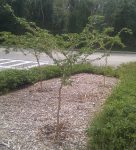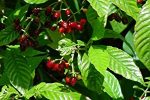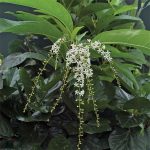Many Florida Keys property owners will be tasked with replacing landscaping damaged by Hurricane Irma. Native plants have grown for centuries here in the Florida Keys and are well designed to survive hurricanes. Following are some suggestions from a Key West Master Gardener on plants to replace what you lost.

Among the trees that survived Hurricane Irma without a leaf falling or even browning was the Lignum vitae “Tree of Life.” The trunks on these trees are short and gnarled, making the tree as wide as it is tall. It needs full sun and is drought- and salt-tolerant. Although it survives hurricanes, it cannot survive the loss of habitat, which is why it is on the list of critically imperiled trees published by the state of Florida. Save the tree by purchasing one grown from seed and planting it in your garden. The striking blue flowers and red and orange seeds will add excitement to your garden year-round. Mockingbirds and catbirds thrive in its branches.

To top off the native look, try a bit of coontie. This pre-historic cycad inhabited the jungles of Earth’s warm climate. It developed a hefty tuberous root so that even if dinosaurs ate it down to the ground, it could sprout again and survive. In Florida, the heavy root was harvested for food production. Between 1845 and 1925, one Miami processing plant used 15 tons a day. Now it is rare to find in the wild, but easily cultivated from its orange seeds. The 2-foot-tall shrub attracts the Atala butterfly. Hurricanes have little effect on its leaves.

Endangered stoppers were once used as Christmas trees by Florida Keys settlers. The red stopper grows to 15 feet in height in a vertical column fashion. Its dull-green [new leaves are red], pointed leaves outlined in yellow, drip around its roots, helping with its watering. Flowers are white puffballs and the fruit is red. The redberry stopper has bright green, pointed leaf tips with white flowers and brilliant red fruit. It grows to 10 feet.

Wild coffee shrubs are excellent for background planting. They too are endangered in the wild landscape, but grow quickly to 7 feet in height with a 6-foot spread in a yard. Hurricane hearty, these natives have no root problems to plague a foundation. They thrive in the island chain’s alkaline, fast-draining soils. Showy white flowers and drive-the-birds-crazy red fruit enhance the lives of animals in the garden. They have no serious pests or diseases.

growns into tall, bushy shrubs or can be pruned into small trees. They seed and flower at the same time all year long. The fiddlewood’s cascading flower’s aroma is overwhelming. Butterflies, hummingbirds and bees devour the nectar. It is a host plant for caterpillars. The fruit is fought over by a variety of birds.
Even sweeter smelling is the sweet almond bush.
Other winners include portlandia, firebush, cassia, beautyberry, bay cedar, locustberry, alamanda, pink powderpuff, ginger, Australian violet, Mexican flamevine, desert rose, muhly grass, milkweed, wild sage, sea lavender, golden dewdrop, jatropha and a host of other plants.
By Robin Robinson Key West Master Gardener [who] was a columnist for the Chicago Daily News and syndicated with Princeton Features. Her books are “Plants of Paradise” and “Roots, Rocks and Rain: Native Trees of the Florida Keys.”
